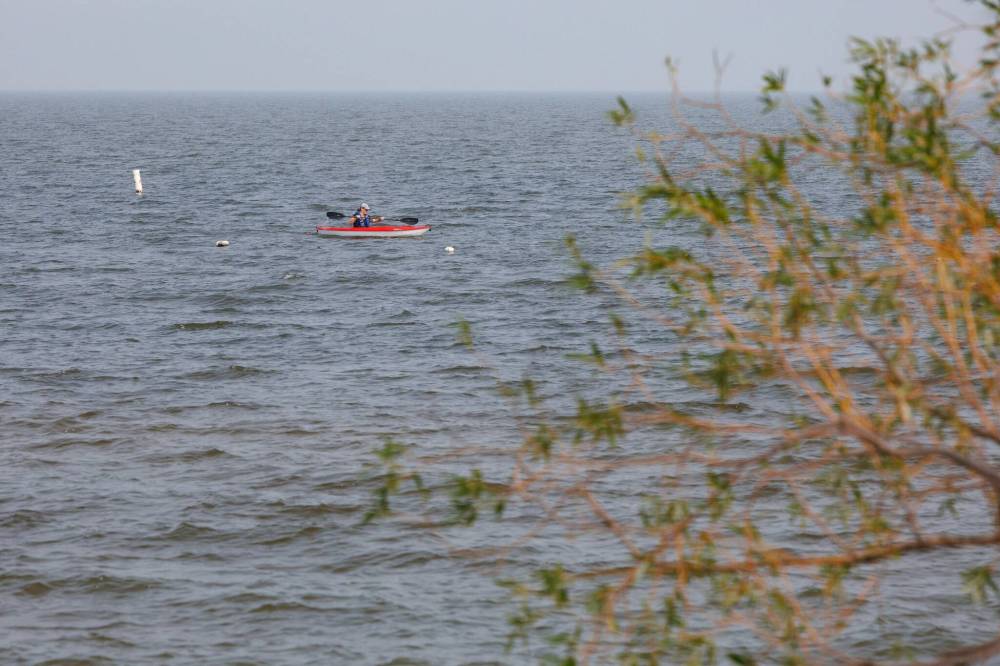Lake lessons from East Africa
Advertisement
Read this article for free:
or
Already have an account? Log in here »
To continue reading, please subscribe:
Monthly Digital Subscription
$1 per week for 24 weeks*
- Enjoy unlimited reading on winnipegfreepress.com
- Read the E-Edition, our digital replica newspaper
- Access News Break, our award-winning app
- Play interactive puzzles
*Billed as $4.00 plus GST every four weeks. After 24 weeks, price increases to the regular rate of $19.00 plus GST every four weeks. Offer available to new and qualified returning subscribers only. Cancel any time.
Monthly Digital Subscription
$4.75/week*
- Enjoy unlimited reading on winnipegfreepress.com
- Read the E-Edition, our digital replica newspaper
- Access News Break, our award-winning app
- Play interactive puzzles
*Billed as $19 plus GST every four weeks. Cancel any time.
To continue reading, please subscribe:
Add Free Press access to your Brandon Sun subscription for only an additional
$1 for the first 4 weeks*
*Your next subscription payment will increase by $1.00 and you will be charged $16.99 plus GST for four weeks. After four weeks, your payment will increase to $23.99 plus GST every four weeks.
Read unlimited articles for free today:
or
Already have an account? Log in here »
Hey there, time traveller!
This article was published 08/09/2023 (769 days ago), so information in it may no longer be current.
On a sweaty Friday afternoon, a few hours delayed, and with one suitcase fewer than when I set off, I finally landed down in the ’Peg after a 20-hour journey from my homeland of Kenya.
For years, I had been aching to visit the province of 100,000 lakes. While, lamentably, I won’t be able to visit them all on this trip, seeing Lake Winnipeg in person was an unbridled delight, as was jumping in an SUV and heading over to another famed freshwater must-see of the region — the IISD Experimental Lakes Area.
I’m thrilled to be in Winnipeg, a lovely city that has welcomed people from all walks of life for thousands of years! I had a chance to visit the Forks, which is located at the confluence of The Red and Assiniboine rivers.

MIKE DEAL / WINNIPEG FREE PRESS Files
Problems facing Lake Winnipeg are also evident in lakes across the Atlantic. There’s much knowledge to be shared between scientists here and in east and central Africa.
Back home, I’m the centre director of the Kenya Marine and Fisheries Research Institute over in Sangoro, Kenya, but am currently in Winnipeg to witness the amazing work done at IISD-ELA and to accompany seven early-career freshwater women scientists from east and central Africa who are here to share knowledge with their Canadian peers.
Already, things are much more similar than we expected.
As I learn more about Lake Winnipeg and its inhabitants, I realize that growing concerns about invasive species, algal blooms and emerging pollutants are widespread in the region, and that these anxieties are not so different from those that plague those who live and work around Africa’s very own Great Lakes.
Perhaps a little primer is needed.
The seven African Great Lakes (lakes Albert, Edward, Kivu, Malawi/Nyasa/Niassa, Tanganyika, Turkana, and Victoria) expand proudly across the eastern, central and southern stretch of the African continent.
They are highly valuable natural resources, renowned for their rich fisheries, “biodiversity hot spots” and incredible beauty. Consequently, their ecosystem services underpin the welfare and livelihoods of over 60 million people across 10 countries. Despite the recognized importance of these vital ecosystems, they and their livelihood support systems are threatened by multiple stressors of human activities at local, regional, and global scales.
Sound familiar?
At all levels, the issues that threaten the health and prosperity of Africa’s Great Lakes, from pollutants to invasive species, are to be found right here in Manitoba’s own freshwater bodies, 13,000 km away.
And shared problems mean that researchers, scientists, advocates, and even concerned citizens, need to work together to find shared solutions.
We need to be able to easily share knowledge, scientific findings, concerning new trends and promising looking solutions with each other. In today’s interconnected digital world, scientists from Dauphin should be able to easily send over information and knowledge to researchers in Dodoma at the click of a button, especially when they are likely tackling the same issue.
This can take the form of online portals, websites, and advisory groups, as well as in-person conferences and workshops, such as the one in which I am currently participating, to learn from each other.
I, for one, would be happy to welcome the many brilliant and dynamic freshwater researchers I have met during my travels around Lake Winnipeg to the shores of Lake Victoria to have a roundtable discussion, say, with my esteemed African colleagues about the future of fisheries and other aquatic resources.
Understandably, the problems that plague Manitoba’s premier lake can seem unsurmountable. Yet, rest assured that many of us are dealing with the same ones in east and central Africa.
And while the ubiquitousness of these freshwater threats across continents might dispirit some, I would encourage them to see instead an opportunity to work together and jointly create solutions with friends from across the pond.
Kevin Obiero is the centre director for the Kenya Marine and Fisheries Institute; the chair of the board of directors for the African Center for Aquatic Research and Education; and a board member of the IISD Experimental Lakes Area.


